-
Posts
9,389 -
Joined
-
Last visited
Content Type
Profiles
Forums
Gallery
Events
Posts posted by Chuck
-
-
Me too!!!
-
Its not a bootlegged kit per say because there is no kit of that ship. This is the only one. But what you have there is a Chinese kit where they ripped off Ancre. They even used the Ancre plans. You can see it on the box. I remember talking with those folks at Ancre and they did not give the rights to any of these Chinese companies to use their plans. They are not even sure of the quality of the kit or if its accurately made to follow the plans the stole. Its a shame. Ancre is NOT getting any compensation for their hard work or research either. Consider this....it would be like Model shipways or Bluejacket just ordering a set of plans from Ancre and decided "screw them" lets use these to make a kit without asking for their permission. Its no different than if another kit company decided to buy a set of plans for Cheerful and just start making kits.....without asking or paying and compensation.
Its certainly a NO-GO for ModelShipWorld. We wouldnt allow a build log of this kit.
Chuck
-
I am re posting this from another topic so its easy for folks to find should they need it.
Its very difficult to measure rope using any method. That technique of wrapping it around a dowel is not very good either. There is too much variation depending on how tightly you wrap it. It would flatten out the rope and distort it. It is also hard to get a consistent space next to each revolution around the dowel. One may be closer than another. It may be squishing the wrap next to it etc. If you did it ten times or asked two different people to measure the same rope that way you would never get the same measurement. It may be close but you would be surprised.
Thankfully You would also be surprised how sophisticated our software has become. I use Corel Draw and Illustrator all of the time. When you draw a line in either program its thickness is measured in points. Lucky for us there are many conversion tables and apps that will convert points to inches.....or metric. Whichever you prefer.
If you know that a line you need is .018" and you want to see what that exact thickness or diameter in our case is....then do the conversion.
.018" is equal to 1.296 points. If you create a line in any of those programs and make it 1.296 points thick.....its pretty darn accurate. You will know what a .018 size rope should be....
Here is a chart I have on my site for folks that need a more visual way to see what these sizes actually look like.
http://www.syrenship...pesizechart.pdf
Its pretty darn on the money and I have one close by at all times when I make my rope. Its leaps and bounds the more accurate way with technology to measure rope accurately. Also set your printer for the highest quality print job........
Maybe when I get some time I will create a new chart which contains even more size variations. Maybe every .005" or something. Here is a good inches to points conversion calculator. Its the one I use.
http://www.thecalcul...s-to-inches.php
Chuck
-
Its very difficult to measure rope using any method. That technique of wrapping it around a dowel is not very good either. There is too much variation depending on how tightly you wrap it. It would flatten out the rope and distort it. It is also hard to get a consistent space next to each revolution around the dowel. One may be closer than another. It may be squishing the wrap next to it etc. If you did it ten times or asked two different people to measure the same rope that way you would never get the same measurement.
You would be surprised how sophisticated our software has become. I use Corel Draw and Illustrator all of the time. When you draw a line in either program its thickness is measured in points. Lucky for us there are many conversion tables and apps that will convert points to inches.....or metric. Whichever you prefer.
If you know that a line you need is .018" and you want to see what that exact thickness or diameter in our case is....then do the conversion.
018" is equal to 1.296 points. If you create a line in any of those programs and make it 1.296 points thick.....its pretty darn accurate. You will know what a .018 size rope should be....
Here is a chart I have on my site for folks that need a more visual way to see what these sizes actually look like.
http://www.syrenshipmodelcompany.com/resources/ropesizechart.pdf
Its pretty darn on the money and I have one close by at all times when I make my rope. Its leaps and bound the more accurate way with technology to measure rope accurately. Also set your printer for the highest quality print job........
Maybe when I get some time I will create a new chart which contains even more size variations. Maybe every .005" or something. Here is a good inches to points conversion calculator. Its the one I use.
http://www.thecalculatorsite.com/conversions/length/points-to-inches.php
I will also make this a stand alone topic so its easier for folks to find when they search for the topic.
Chuck
- keelhauled, Canute, robnbill and 2 others
-
 5
5
-
Don't forget to bring the model to our next club meeting. I want to have a good look at it. I will will be bringing mine. We can compare notes.
Since you seem to be moving right along at a rapid pace, I also completed the next chapter and its available for download. I should have another available shortly as well.
http://www.syrenshipmodelcompany.com/revenue-cutter-cheerful-1806.php
Its really looking great. The guys are going to flip over that planking job you are doing.
- Erik W, Ryland Craze, Canute and 2 others
-
 5
5
-
Jeff is working on updating the plans and monograph. As soon as its complete I will post an an update along with the adjusted plans on the website. There really isnt much to say about it. The scarfs just need to be turned so they are now fully visible on the top and bottom of the keel rather than the sides. Stay tuned for the actual update.
Chuck
- Canute, Saburo, AnobiumPunctatum and 2 others
-
 5
5
-
-
-
-
I agree ken....
The six deck elements that I needed to complete before I started planking the deck are now finished.
The companionway was pretty straight forward. I used 1/32" thick strips glued together edgewise to make the sides and top of the companionway. I darkened the seams before gluing them up with a pencil. I knew they would show through the transparent red paint and add a nice visual detail.
The hinges are laserboard with small lengths of tubes used to simulate them. They are not working hinges though. Each side of the companionway was built in one solid piece and assembled like a box. The hinges were glued on afterwards. I have omitted the coaming as was seen on the photo from that contemporary model.
The last deck element to complete was the coaming where the stove stack will go. That was pretty straight forward as well. I just followed the plans. The height and width for all of the coamings on these six elements varied so Careful attention was needed. I had to build this last one twice after making the coaming too high. I need to look at my plans more often!!!
Chuck
- UpstateNY, yvesvidal, captainbob and 31 others
-
 34
34
-
I would absolutely change the direction of the scarf joints to what is more commonly acceptable. I looked over the plans very carefully before publishing as did others, and had made several recommendations for changes. This was actually one I had overlooked.

I will certainly make this a new recommendation to Jeff to possibly change it in the guide and plans for future printings. Nice catch. But I will talk to him and see where he is on the subject. But in my opinion, yes the scarfs should go in the other plain as is commonly seen.
Cheers,
Chuck -
I forgot to show the image of the Rogers model which was "zero" help. The companionway is basically shown as a giant solid red cube with smooth sides.
You can see the lower and flattter skylight though. This is at odds with the original draft. But I wonder why so little detail on that cube....
Chuck
-
Some notes about the companionway that I will be building next. It is a typical companionway. They are all similar. Some have a more sloped top. But I drafted the profile shown on the original draft which was pretty square. I am sure you could alter it to suit and it would be reasonable and OK.
But one thing I noticed that was different from contemporary models and not consistent. Some Companionways did in fact have a coaming while other did not. Some had wide coamings that stuck out as i built for the skylight. But I decided to model a coaming that way for the skylight on the assumption that some were portable and could be lifted out and replaced with a simple grating for air circulation. But the Companionway is different. My plan shows it with a thick coaming but I may model it without as in the example provided (Second drawing and photo). This way anyone building her can have more visual info and can decide which they want to choose. I guess you can say the image below still shows a coaming but it is just not wider than the companionway which I have seen in other examples. There are such a wide array of different configurations it can get confusing.
I welcome any discussions about it.
Chuck
- WackoWolf, mikegerber, mtaylor and 14 others
-
 17
17
-
-
-
Thank You very much,
Today I decided to build the skylight. There are many shapes and sizes shown on cutters. This matches the original draft but I imaging any similar would do. I decided to make this a mini-kit. All of the parts are laser cut from boxwood, laserboard and acetate.
First I doubled up two parts to form the "lip" I will need to build this thing. There are some funky angles on the skylight because after its built the fore and aft sides must be vertical. So it was a challenge to say the least. This was done for the sides and the window frames.
Then the window frames of the roof were beveled on the top and bottom edges. This was very important so they would fit together tightly in the next step. I used an emery board.
Rather than complete the frame and then add these on top, I decided to build the roof first. I tried a first prototype the other way and it was hard to get all of the angles correct and doing it in this order solved the issues. The two halves of the roof were glued to one of the sides as shown. It helped to keep the whole thing squared up and interestingly this made it easier to build..
Then the other side was added and finally the two port and starboard side pieces beneath the window frames. This finished the initial framing. I know I am going to paint this red so I filled even the smallest cracks and sanded it afterwards.
Finally a coaming was added around the skylight frame. This coaming was not as thick or as high as the coaming for the main hatch. Because it was going to be painted I didnt bother with lap joints. Note how the skylight doesnt sit flush on the ground. It is lifted off the coaming by half of the width of the timbers. This helps keep the decorative etched molding nice and neat with equal distance all around it. The fore and aft sides were done first. Then port and starboard. The corners were rounded with the right angle jig like the coamings for the main hatch to finish it up. Then it was painted red.
Finally the laser cut acetate windows were dropped in position along with the skylight window frames. The later was cut from very thin laserboard and painted to look like boxwood. None if these items are glued to the deck yet. I am waiting to finish up the companionway next and then I should be ready to start planking the deck around these elements.
-
Thanks,
Today I started making the coamings for the hatch gratings. There are three, but only two need coamings. The main hatch is shown here. The second smaller grating will be just aft of the windlass.
The gratings were made using the Syren grating kits with camber already built in them.
Then the coamings were built up around the finished gratings. Too often I see folks build the coaming following the plans and then when it comes time to add the grating it wont fit. Sometimes you end up with holes along the coaming or have to shave down the grating too much to fit it into the coaming. By building the coaming around a finished grating I wont have this issue. Now my grating may end up being a hair larger or smaller than the plans but that is less important than having it look correct. We are talking about maybe .025" larger or smaller...thats acceptable.
The coamings were made with the usual lap joints. Note the fore and aft sides have a roundup. These coamings are 1/4" high. Others will be less and not as thick...they are all different but for the two gratings the coamings are 1/4" high x 3/32" thick. But dont forget that the planking will go around them so only 3/16' will be above the planked deck.
Then a right angle jig was used to round off the corners except for what will be the bottom 1/16". The jig is 1/16" thick which will be the same thickness as the planking. I added a strip inside the coaming on the port and starboard sides to create a lip to support the grating as well.
To finish it off I softened the hard corners all around the top edge of the coaming. I may or may not paint the coaming red and leave the grating bright. But I dont know yet. I have seen Cutter models done both ways. There will be a lot of other deck fittings painted red so I dont want to go overboard...
 . Tomorrow I will make the coaming for the smaller grating behind the windlass.
. Tomorrow I will make the coaming for the smaller grating behind the windlass.Chuck
- mikegerber, Archi, minimini and 29 others
-
 32
32
-
-
Thank You...

In preparation for planking the deck, I added the waterway/margin planks. For my purposes here I talk about them as two separate pieces. First the wider margin plank was created with scarf joints next to the bulwarks. I used card stock to make templates first. There are three lengths as shown below. This required a lot of tweaking until I got it right. Then the templates were traced onto a 1/16" thick sheet of boxwood and cut out. The deck planking will be 1/16" thick.
I spent a lot of time carefully shaping the scarf joints with a #11 blade and some needle files until they were a nice clean and tight fit. Then they were glued onto the deck area. The back edge needed to be beveled so I could get a tight fit against the bulwarks in many areas. Particularly at the bow. A pencil darkened the seam of scarf joint just like the hull planking. Eventually the deck planking will be nibbed into these margin planks.
When finished, I added the waterway on top of the margin plank. It was a 1/32" strip that was slowly sanded to become a 1/4 round. I basically sanded off one corner edge and rounded it off. It was glued on top and the seams between the pieces were carefully lined up with the scarf joints. So again three lengths were used. This way they look like they were done as one piece. These thin strips also needed to be beveled to fit tight against the bulwarks. The bulwarks are unfortunately not at a nice 90 degree angle to the deck so the bevel was an absolute necessity.
Now its time to start building the hatches, coamings and gratings and skylight. Then I can plank the deck around them. I cant wait until thats done,. After this step its just about the small details...and that is a lot of fun.

Chuck
- druxey, Maury S, Elmer Cornish and 35 others
-
 38
38
-
Thank you guys.
Just a real quick update. Not to much except I did drill the hawse holes and the hole for the bowsprit. As simple as this procedure may sound it is actually rather tricky. I had to be really careful to drill these parallel to the keel and straight back. There is always a tendency to just drill through straight in. But instead, the bit must be held so it enters the bulwarks parallel to the keel. I started with a small hole so if the angle was wrong it could be corrected. Then I switched to needle files and then an even bigger round file to finish it off.
The angle is super important because the hole for the bowsprit must be drilled the same way. Straigh back and parallel to the centerline. If the hawse holes were drilled at an "off" angle then there wouldnt be room to properly create the hole for the bowsprit. I used a graphite pencil to darken the hawse holes but I may go back and use a dull flat dark gray instead, No rush to decide.
Now I can move on and start creating the waterway in preparation for the deck planking.
Chuck
-
-
-
-
Of course you can...Just take the parts list and see how many you will need. I cant break down a package for so few blocks...so you will have to buy a complete package of each size. Otherwise I would only be selling 15 blocks of various sizes. I am sure you will find use for the extras on future models.
Chuck

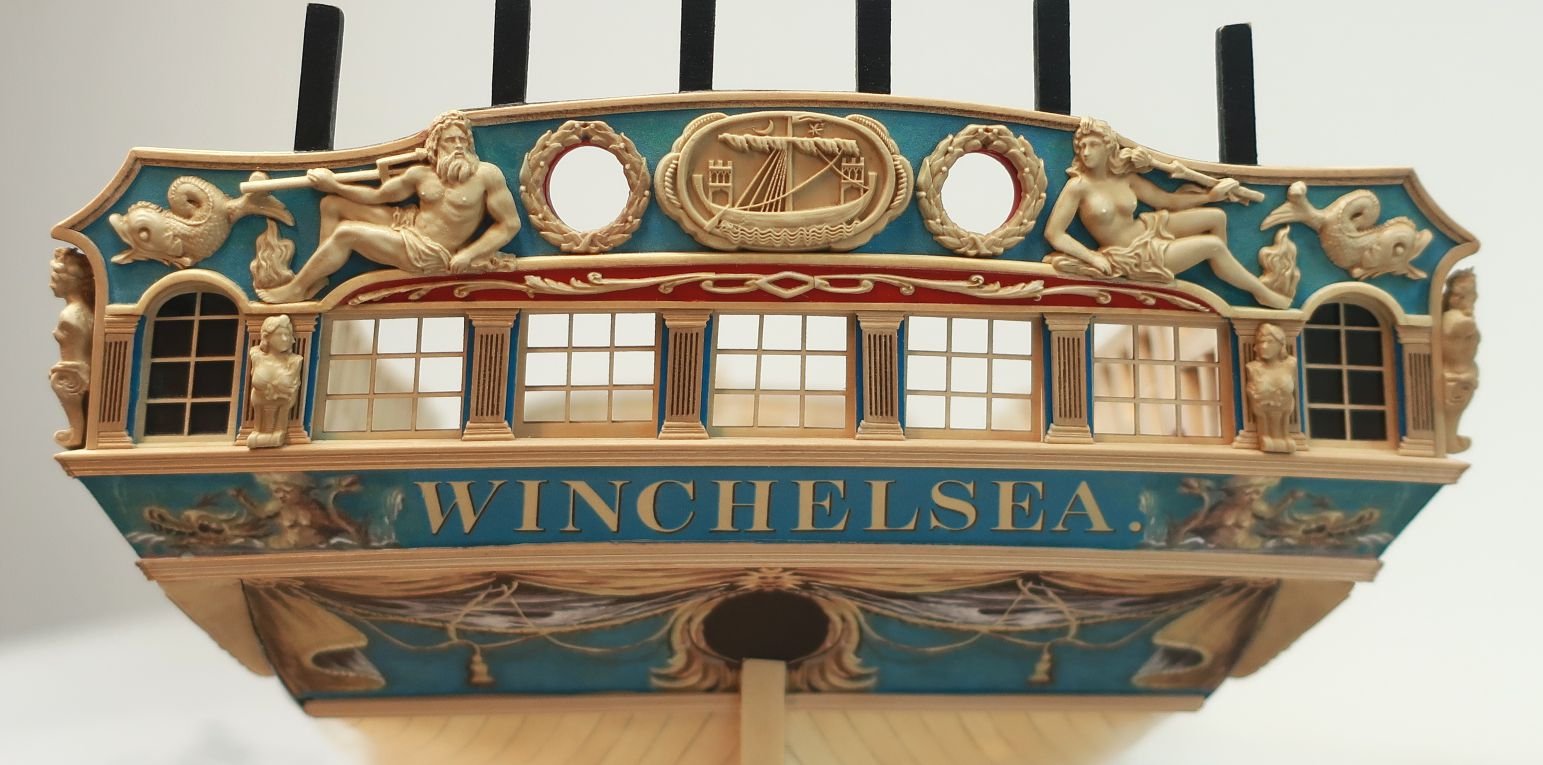
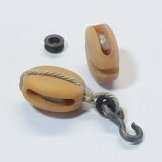
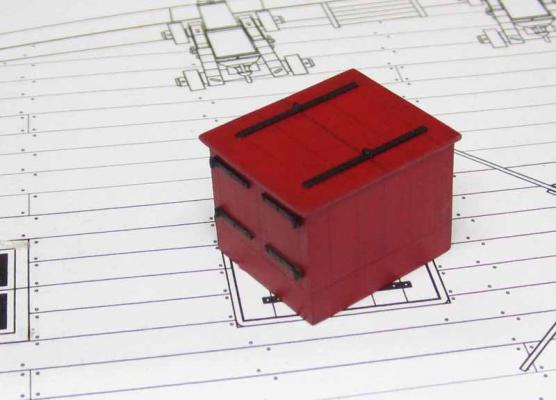
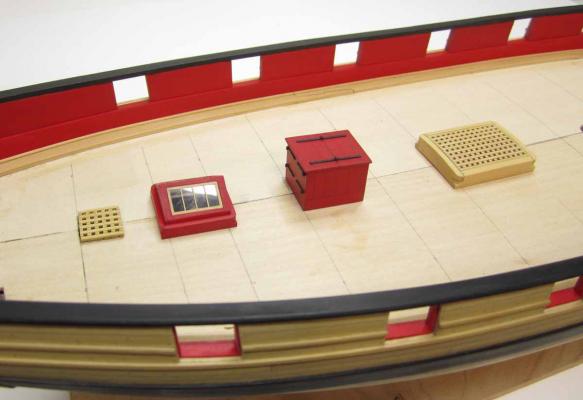
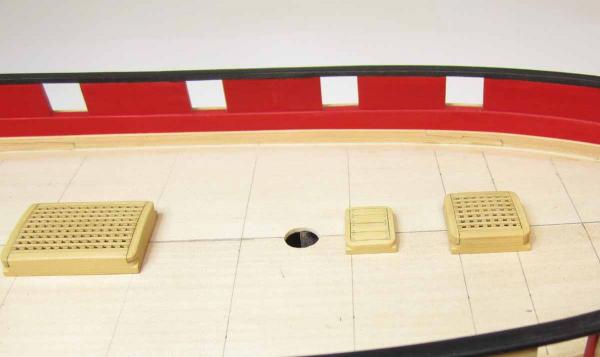
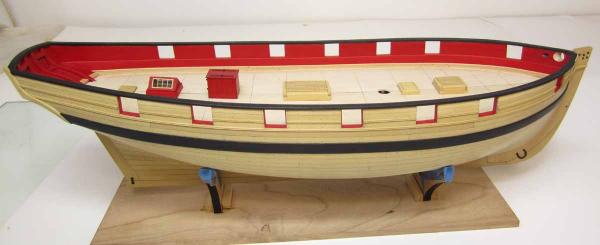
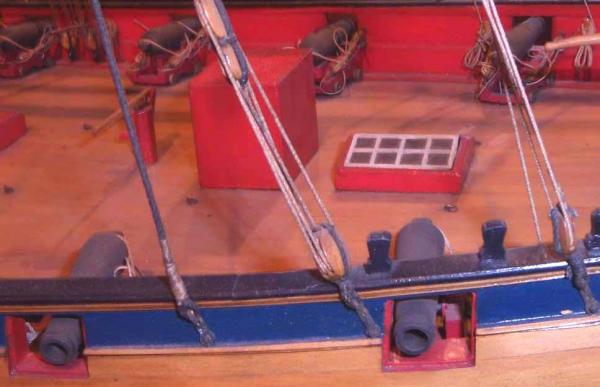

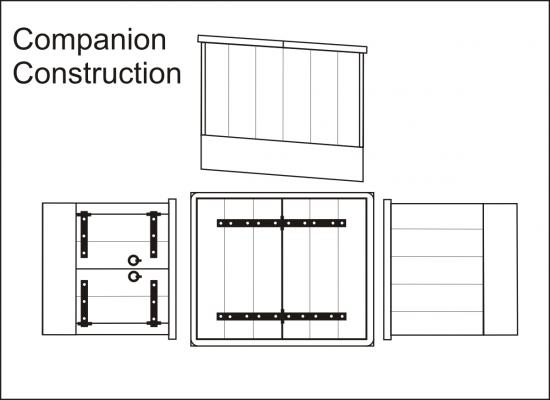
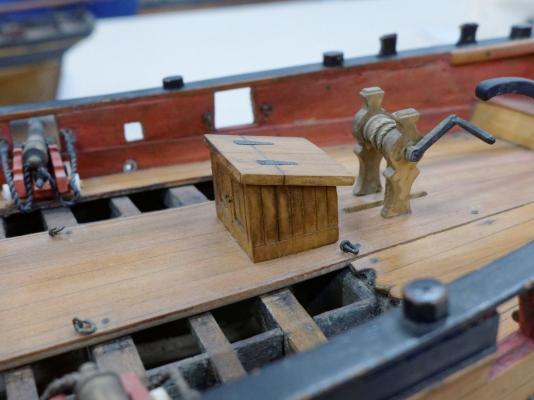
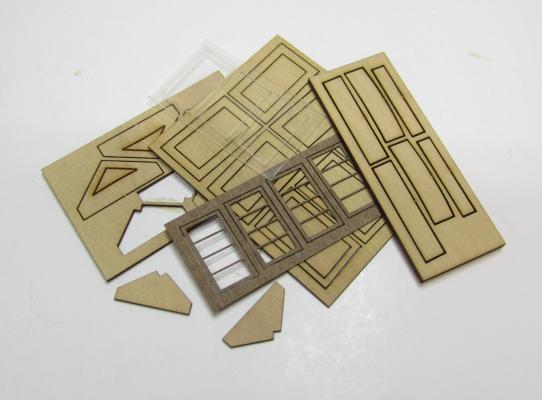
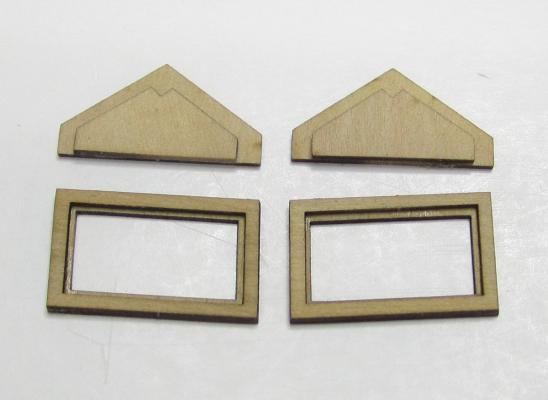
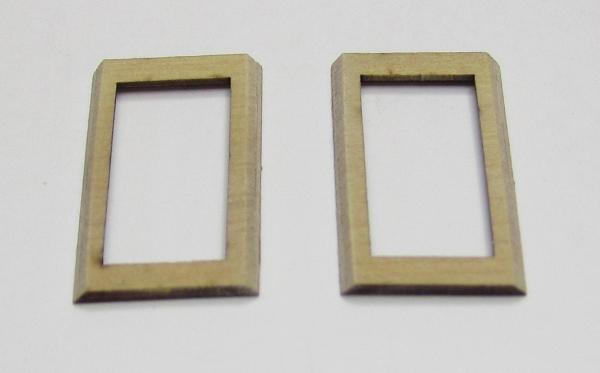
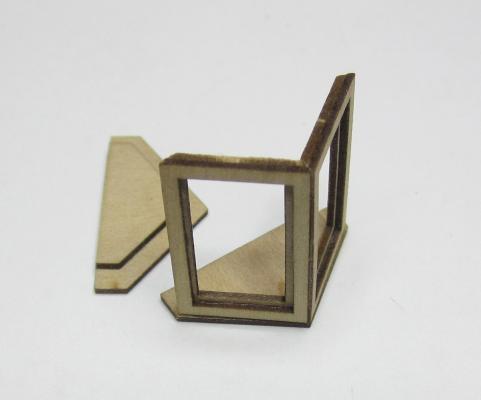
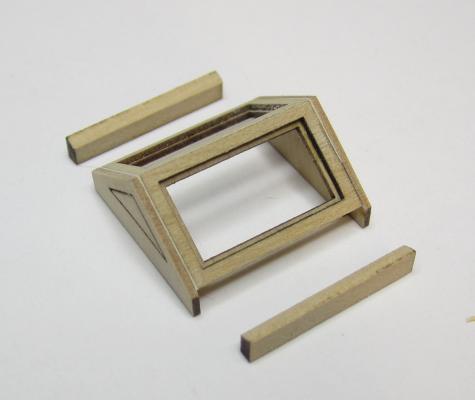
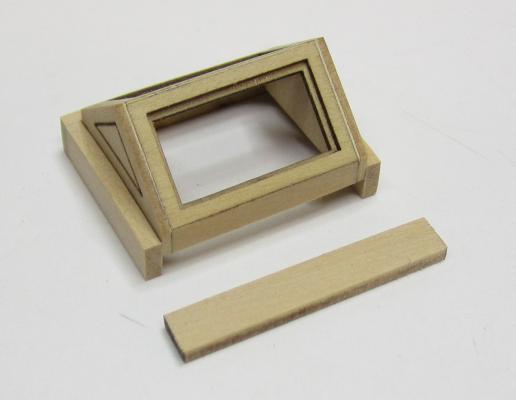
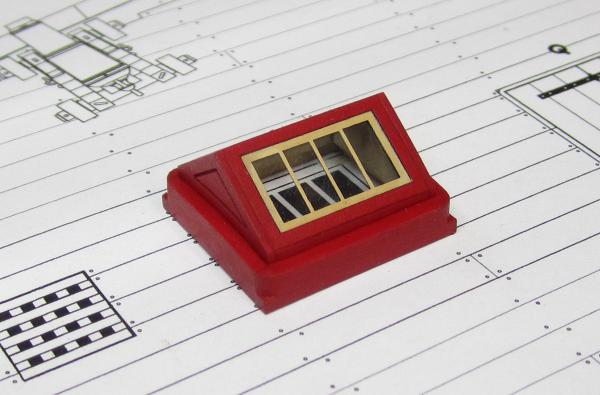
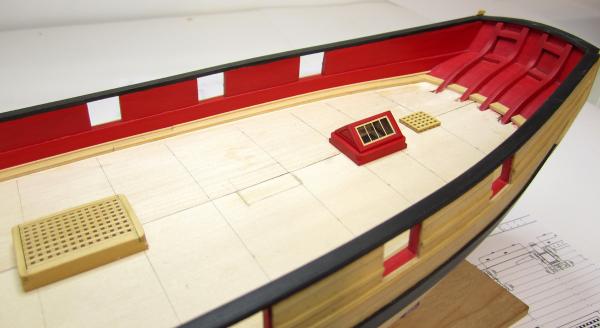
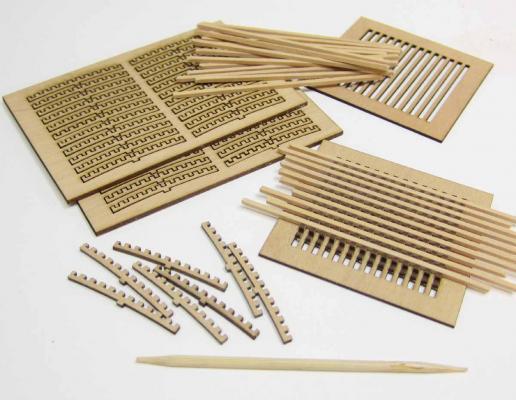
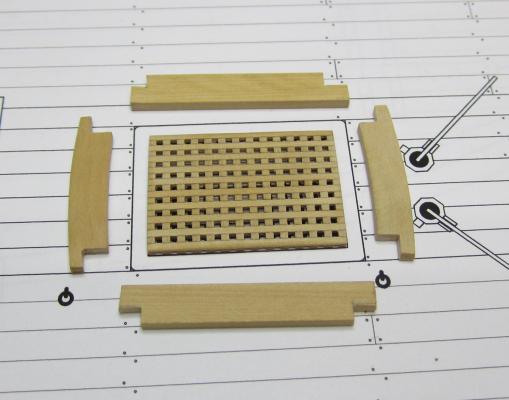
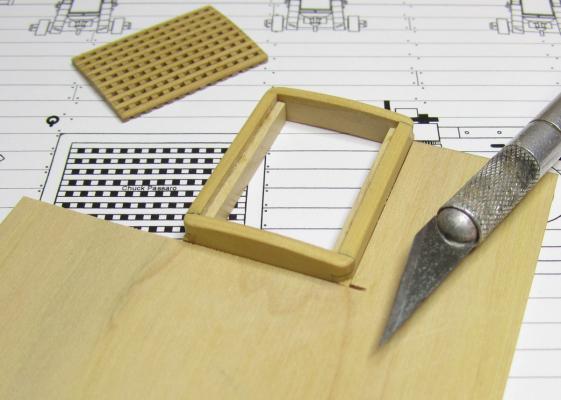
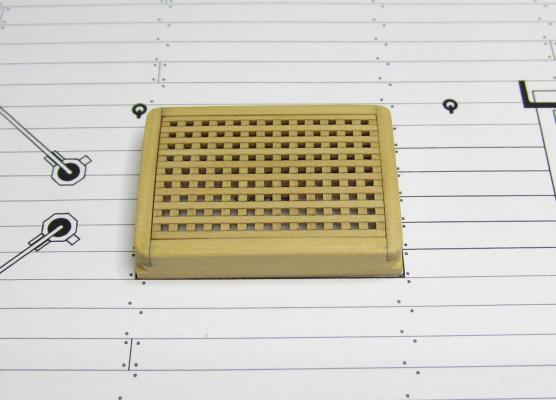


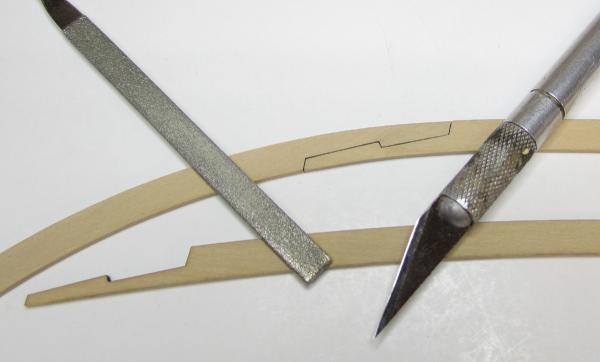
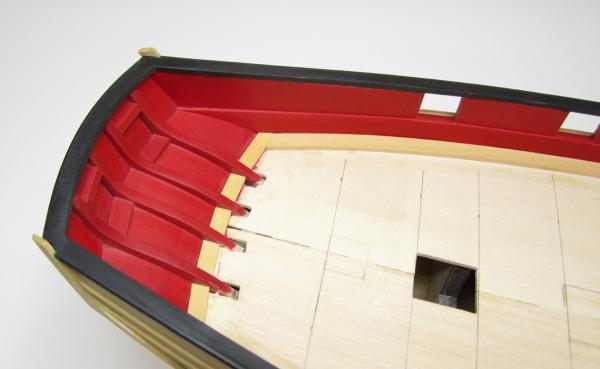
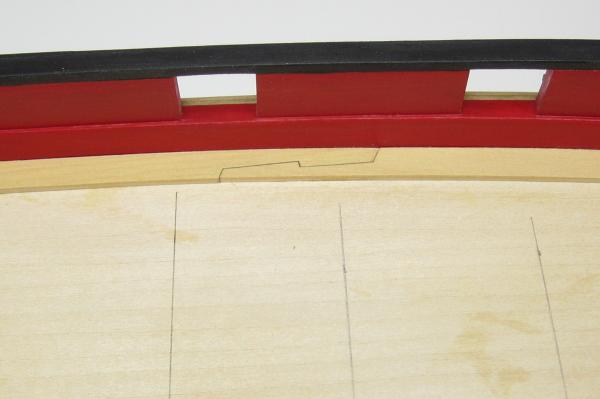

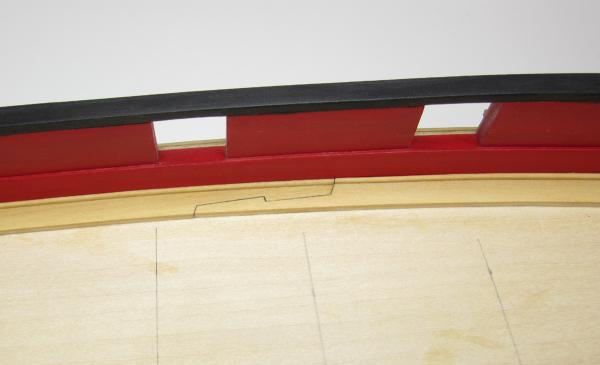
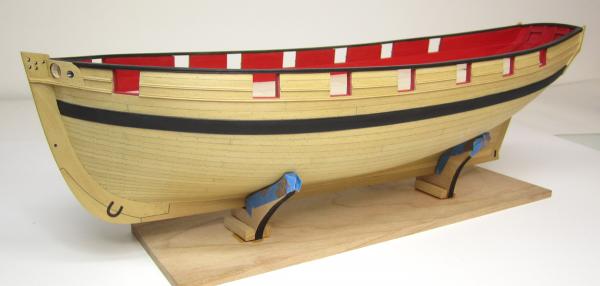
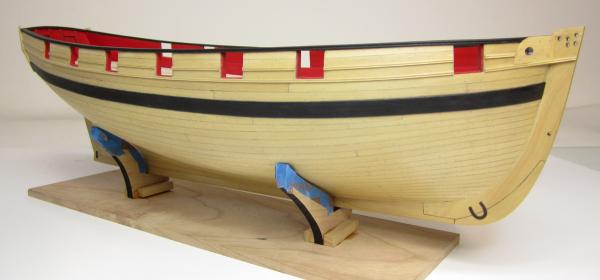
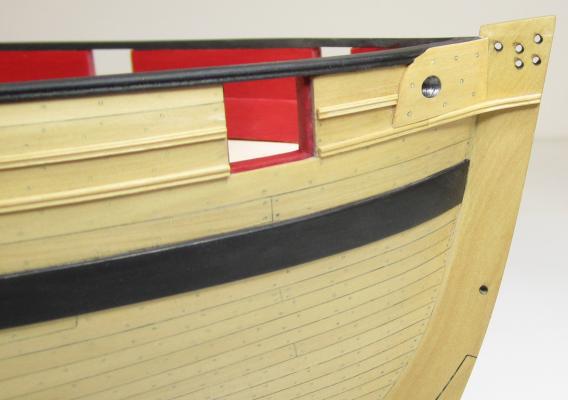
HM Cutter Cheerful 1806 by Ian B - FINISHED - 1:48 scale
in - Build logs for subjects built 1801 - 1850
Posted
That is very dark. But it is also coming along well.